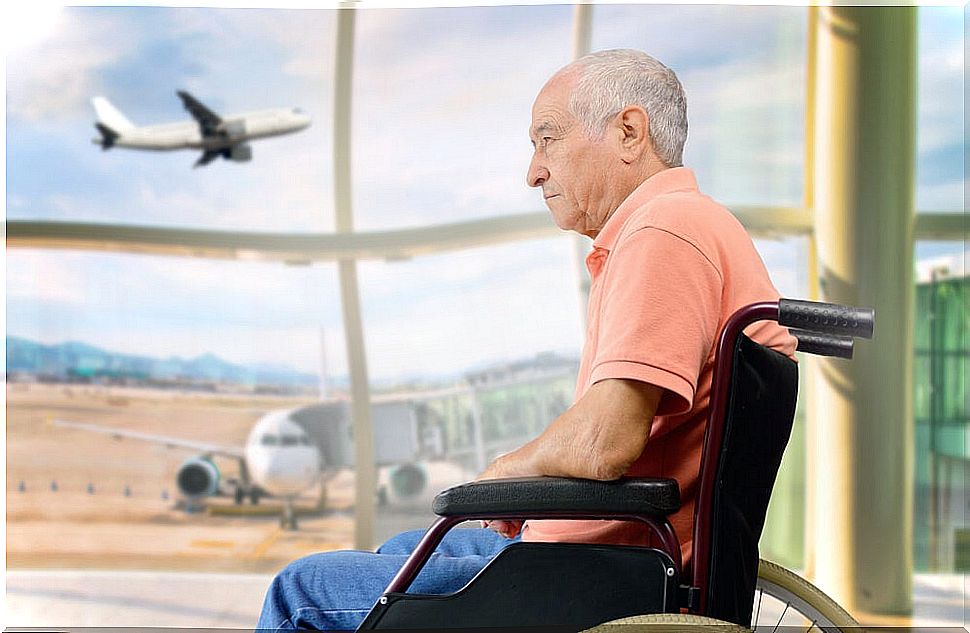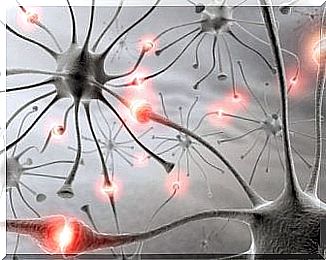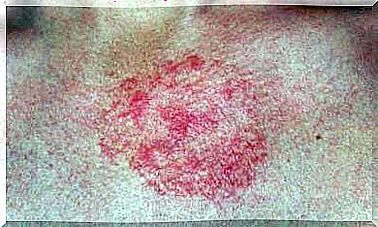Cloistered Syndrome
The locked-in syndrome or pseudocoma is a lesion that presents with total skeletal paralysis, except for the ocular muscles, and with a state of alertness and wakefulness. Furthermore, the patient will be unable to maintain verbal communication flows.
This injury is produced by alterations in the brainstem, more specifically in the annular protuberance. There is a variant of this clinical picture called ” total lockdown syndrome ” in which ocular paralysis (ophthalmoplegia) does occur.
Cloistered syndrome

This syndrome is named after neurologists Fred Plum and Jerome Posner, who coined the term in English ” locked-in syndrome ‘ ‘ which translates into Spanish as locked -in syndrome. It is also known as: captivity syndrome or confinement syndrome. It should be noted that Fred Plum also conducted research on the nervous system such as persistent vegetative state and coma. While Jerome Posner is recognized for his study of paraneoplastic syndrome.
Causes of locked-in syndrome
The causes of locked-in syndrome are associated with lesions in the lower brain and brainstem. That is, the upper brain is not damaged. In this way, it differs from the persistent vegetative state. In this way, among the main causes are the following:
- First, head trauma. Alteration of normal nerve function or other pathologies of the brain associated with physical damage to the brain. This is the main cause of locked-in syndrome.
- Stroke or embolism, usually affecting the basilar artery.
- Damage to the neural network such as the destruction of the myelin sheath (responsible for electrical synaptic transmission)
- Finally, drug overdose.
Development of the clinical picture

The most remarkable thing regarding the development of the clinical picture is that the patient presents a state of alert in which his mental processes are not altered. However, he cannot express himself verbally due to skeletal muscle paralysis (quadriplegia or cerebral palsy). What happens is that there is a lack of coordination between the respiratory movements and the voice, cutting off the emission of sound.
The symptoms seen may be reminiscent of sleep paralysis, also known as old witch syndrome, a parasomnia. When the syndrome proceeds without ophthalmoplegia, patients end up developing the ability to communicate through blinks and movements of the eyeball because they have control over the extrinsic muscles of the eye. Occasionally, in addition to this, they maintain the body’s proprioceptor function and sensitivity.
Diagnosis of locked-in syndrome
The diagnosis of cloistered syndrome is made clinically. As the patient has motor paralysis , the withdrawal reflex test can be done to assess his ability to react. To rule out unconsciousness, you have to communicate to make eye movements.
In the same way as in the vegetative state, diagnostic imaging techniques such as Magnetic Resonance Imaging (MRI) are used to detect the lesion of the lower brain. What is sought is to rule out other neurological disorders that can be treated.
To clear up any doubts, you can proceed with a brain SPECT or a functional MRI, which shows areas of the brain performing a certain function. The locked-in syndrome presents a normal sleep-wake electroencephalogram (EEG).
Prognosis of locked-in syndrome

The preamble to a favorable prognosis is a rapid recovery of lateral eye movements. As a general rule, the evolution of the patient will depend on the causes of the clinical picture. We present 3 cases that affect the prognosis of the locked-in syndrome.
- The cloistered syndrome secondary to ischemia or a mild stroke in the basilar artery is completely resolved.
- If the cause is partially reversible, as in the case of Guillain-Barré syndrome (autoimmune disease), there may be some recovery within a few months, but it is almost never complete.
- In the case of cancers of the lump or other irreversible or progressive disorders, the outcome is fatal.
There is seldom a complete motor recovery. After the first 4 months from the onset of symptoms, 90% of patients die. However, there are cases of people who live longer and, there have also been exceptional cases such as Kate Allant, in whom a spontaneous and complete recovery occurred.
Treatment for locked-in syndrome
There is no treatment for locked-in syndrome . However, symptomatic treatment is sought to improve, as far as possible, the quality of life of the patient. In addition, one of the most successful proposals is the stimulation of muscle reflexes with electrodes. With this technique it has been seen that patients have recovered a part of their motor function.
Other techniques are aimed at improving patient communication. One of these techniques is the Dasher, which consists of software that allows the patient, through eye tracking or slight movements with the mouse, to write. This type of technique is called computer accessibility software.
In the first decade of the two thousand, some researchers claimed to have managed to communicate through noises with the nose (sniffing). However, there is still a lack of information and evidence to find a solution capable of reversing the cloistered syndrome.








